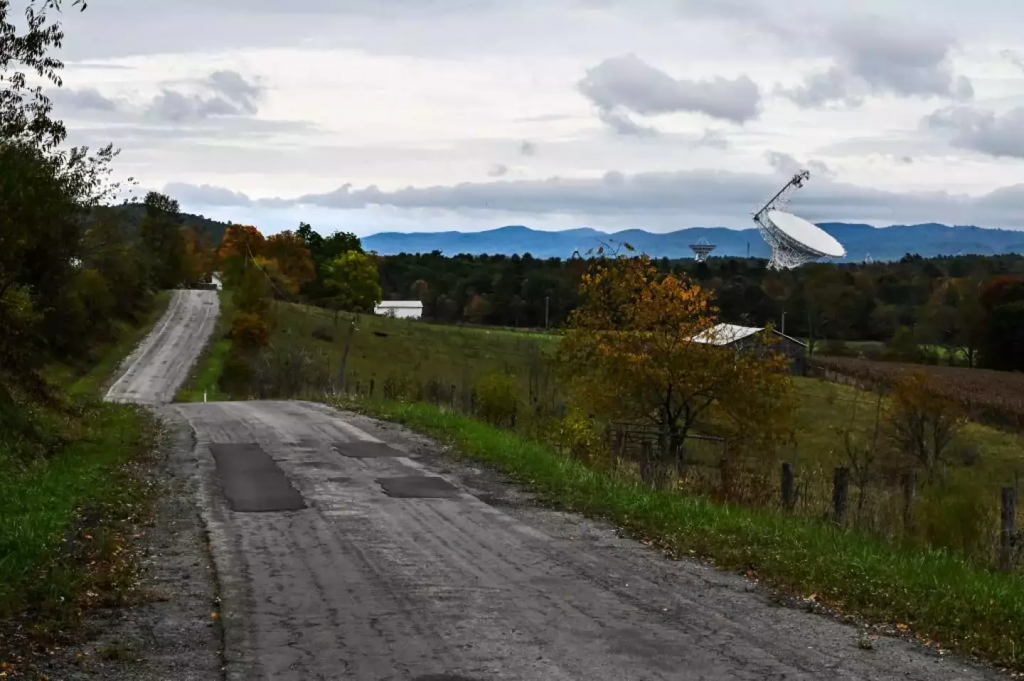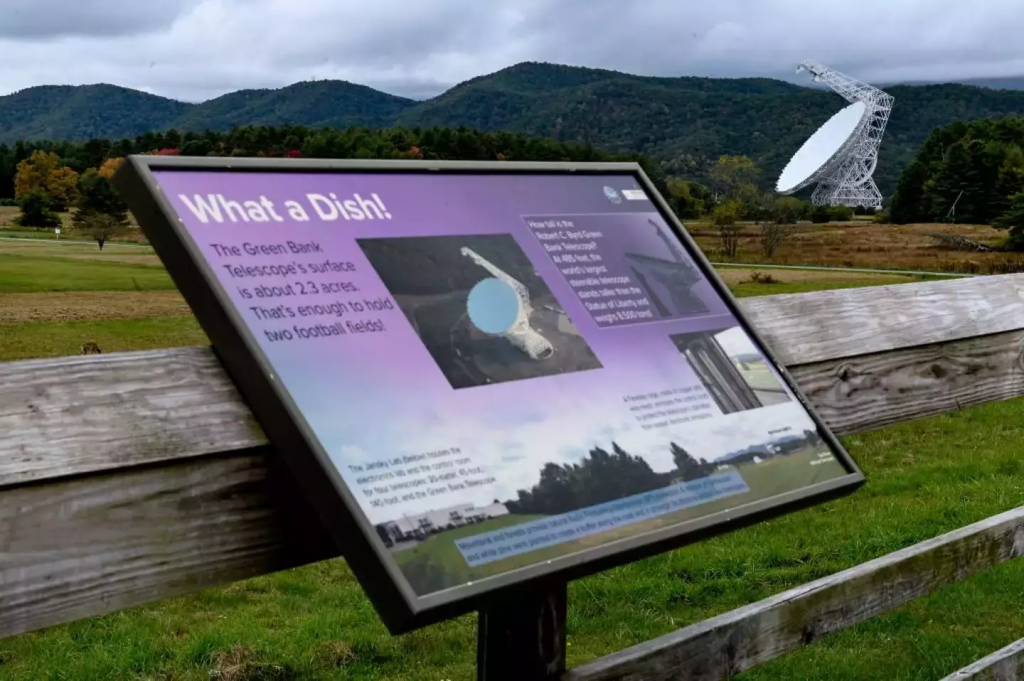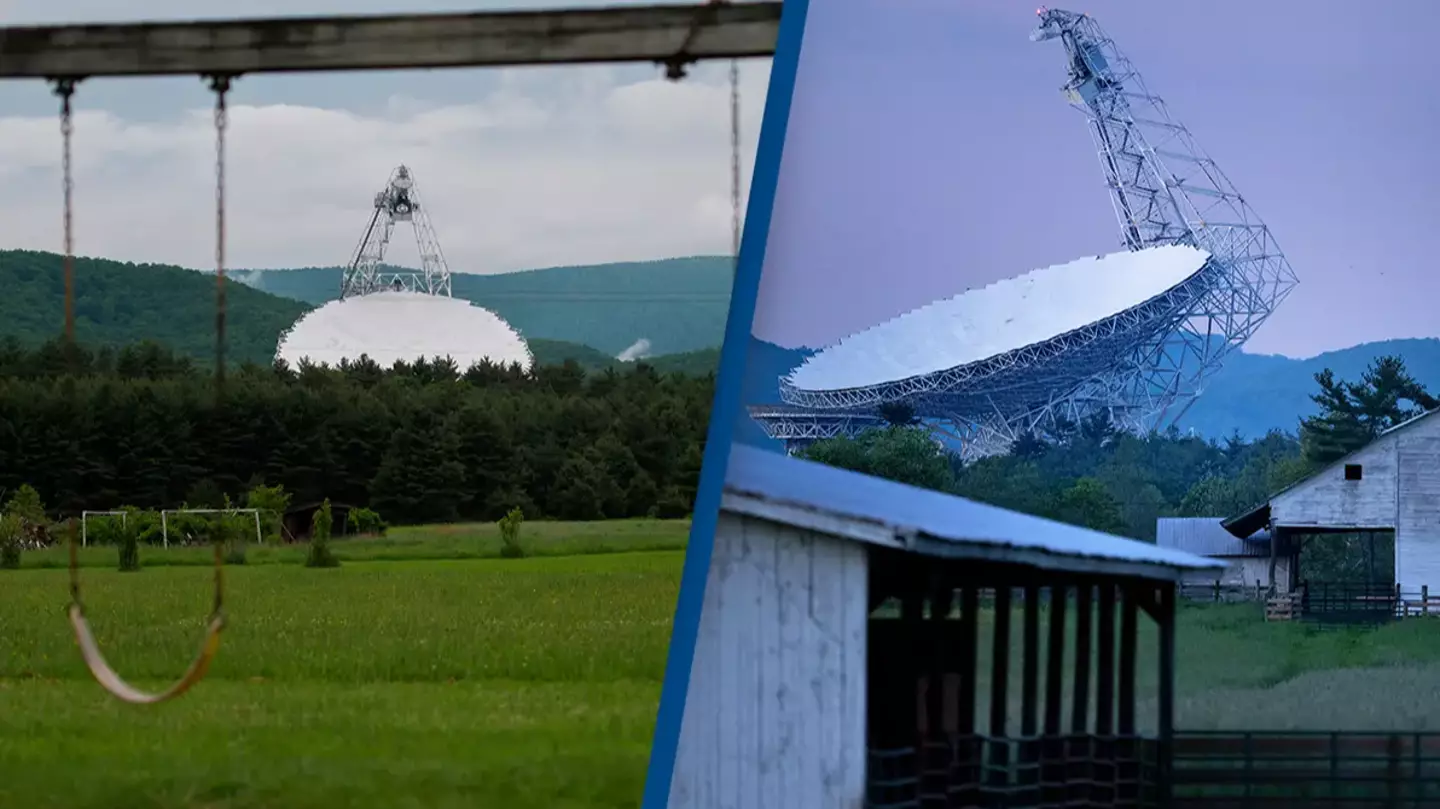Nestled in the picturesque hills of West Virginia lies Green Bank, a town like no other in the United States. Dubbed the “quietest town in America,” Green Bank enforces strict rules that ban modern conveniences such as cell phones, Wi-Fi, and even microwaves. But why would a town choose to live without the technology most of us consider essential?
Green Bank is home to the Green Bank Observatory, which houses the Robert C. Byrd Green Bank Telescope (GBT), the world’s largest fully steerable radio telescope. This impressive piece of scientific equipment is so sensitive that even the faintest electronic signals can interfere with its operations. To ensure the telescope functions without disruption, Green Bank is part of the National Radio Quiet Zone, a 13,000-square-mile area where radio frequency interference is strictly controlled.

In this unique town, residents live without many modern conveniences. Cell phone towers are absent, Wi-Fi is forbidden, and even household appliances like microwaves are discouraged. The measures might seem extreme, but they are essential to preserving the delicate operations of the observatory. Everyday activities, such as making a phone call or streaming a video, could generate radio waves strong enough to disrupt the telescope’s ability to detect faint signals from outer space.
Despite these restrictions, the people of Green Bank have adapted to a way of life that emphasizes simplicity and face-to-face interaction. Landlines are the primary means of communication, and social gatherings often revolve around outdoor activities or community events. While some residents view the restrictions as a sacrifice, others embrace the peace and quiet as a welcome escape from the noise of the modern world.

Visitors to Green Bank often marvel at the town’s unique atmosphere. Many are intrigued by the rare experience of disconnecting from digital distractions, while others find it challenging to adjust to the absence of Wi-Fi and cell service. For the town’s residents, however, this lifestyle has become second nature, blending traditional living with a commitment to scientific progress.
Green Bank’s story is a fascinating reminder of how technology can shape our lives—and how its absence can foster a different kind of connection. By prioritizing the needs of science and embracing a quieter existence, the town offers a glimpse into an alternative way of life that stands in stark contrast to the fast-paced, tech-driven world outside its borders.
